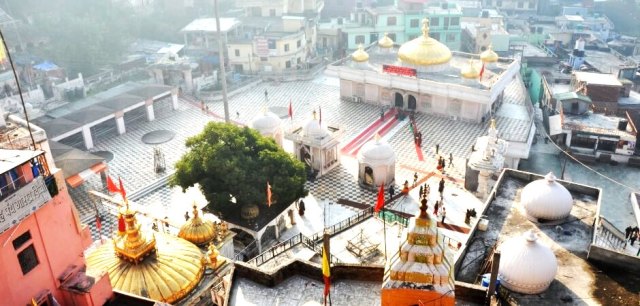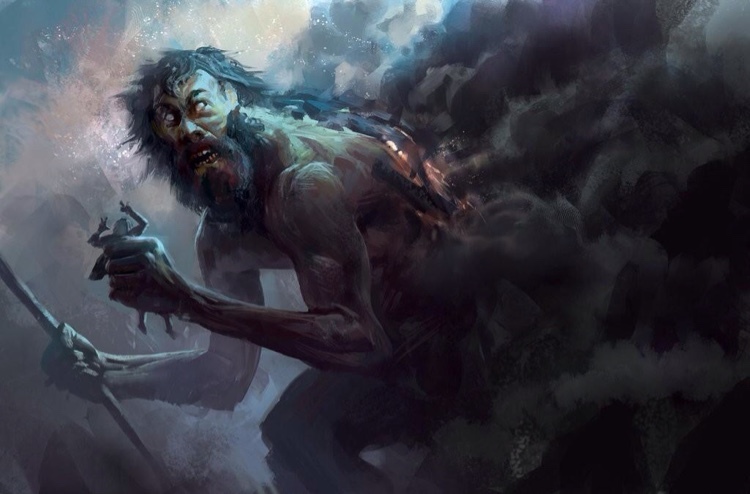Jwalamukhi : A Flame is burning in this Temple without any kind of Fuel or Wick
A Flame is burning in this Temple without any kind of Fuel or Wick. The Flame is Worshipped as Goddess Sri Jwalamukhi.In this place the tongue of the shakthi fell down and worshipped as Siddhida(Ambika).The bhairava is Unmatta Bhairav.
Jwala Devi is one of the major 'Shakti Peethas' of temple in India. Jawalmukhi temple is one of the most visited temples in Himachal Pradesh. The temple is dedicated to Bhagwati Jwalamukhi who is the presiding in the form of flames. Due to this fact, the goddess is also referred as the 'Flaming Goddess', where eternal flames represent the deity Jwalamukhiji is most famous for the ceaselessly burning blue flame originating in the rock sanctum. The temple is amazingly perched on the ridge known as Kali Dhar. It has a vault and high pinnacles with a 3-feet deep square pit in the interior surrounded by a pathway around it.
The temple came to be known as the Jwala Devi Mandir. There is no idol in this temple because the goddess is considered to be residing in the form of flames. This temple has nine ceaseless flames that are named as, Vasini, Annapurna, Chandi, Mahakali, Hinglaj, Vindhya, Mahalakshmi, Saraswathi, Ambika and Anji Devi respectively. The unique thing about Jwalamukhi Temple is that there is no shrine, but the flame is considered as the sign of goddess Jwalaji.
Once Goddess Sati's father, Daksha insulted Lord Shiva, by not inviting him for an yagya in which he invited all beings, unable to accept this, she killed herself by jumping into the yagya fire. When Lord Shiva heard of his wife’s death his rage knew no bounds and holding Sati’s body he began stalking the three worlds. The other gods trembled before his wrath and appealed to Lord Vishnu for help. Lord Vishnu let fly a volley of arrows ( Sudarsana Chakra in a context )which struck Sati’s body and severed it to pieces. At the places where the pieces fell, the fifty-one sacred 'shaktipeeths' came into being. "Sati’s tongue fell at Jawalaji and the goddess is manifest as tiny flames that burn flawless blue through fissures in the age-old rock".
It is said that centuries ago, a cowherd found that one of his cows was always without milk. He followed the cow to find out the cause. He saw a girl coming out of the forest who drank the cow’s milk, and then disappeared in a flash of light. The cowherd went to the king and told him the story. The king was aware of the legend that Sati’s tongue had fallen in this area. The king tried, without success, to find that sacred spot. Again, some years later, the cowherd went to the king to report that he had seen a flame burning in the mountains. The king found the spot and had darshan (vision) of the holy flame. He built a temple there and arranged for priests to engage in regular worship.
AKBAR
The Mughal Emperor Akbar once tried to extinguish the flames by covering them with an iron disk and even channelizing water to them. But the flames blasted all these efforts. Akbar then presented a golden parasol (chattar) at the shrine. However, his cynicism at the power of devi caused the gold to debase into another metal which is still unknown to the world. His belief in the deity was all the more strengthened after this incident. Thousands of pilgrims visit the shrine round the year to satisfy their spiritual urge.
Jwalamukhi Mandir is built on a wooden platform in the "Indo-Sikh" style of architecture. The structural design of the temple is simple, but the religious aura makes it undoubtedly divine.The dome and spire of this temple are covered with Gold. The main door of the shrine is plated with silver. In front of the main shrine, there is a huge brass bell that was presented by the King of Nepal.
The main attraction of the Jawalmukhi temple is the session of Aarti. The Aarti takes place five times a day but the most splendid one is Shaiyan Aarti that performed during the evening. Inside the temple, there are precious ornaments and valuable dresses are kept.
Source :
http://www.templeadvisor.com/temples-in-india/hindu-temples/jwalamukhi-temple












Comments
Post a Comment